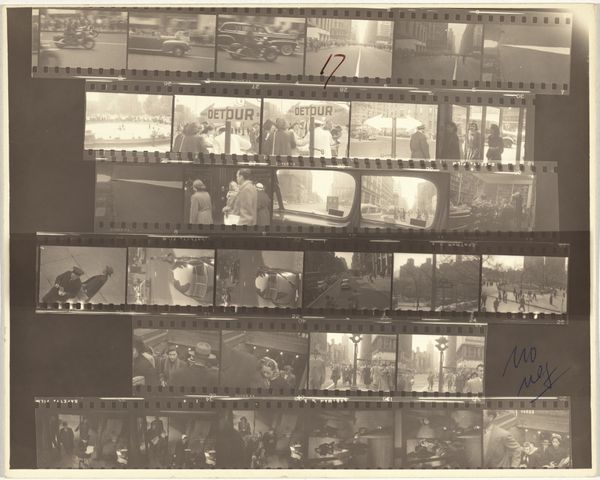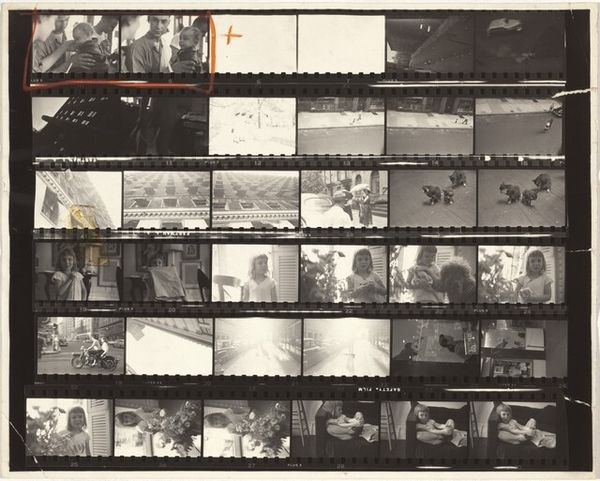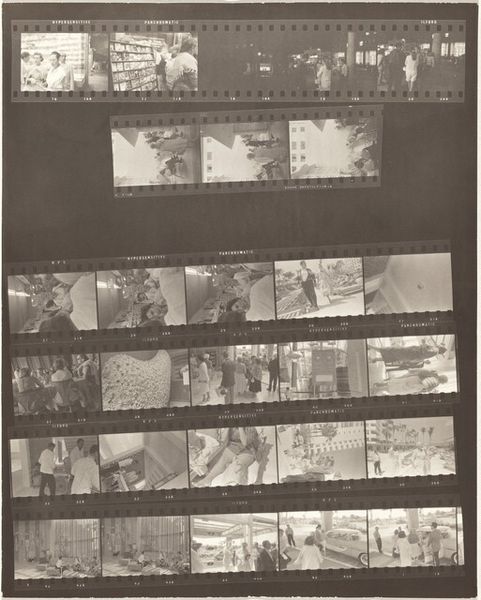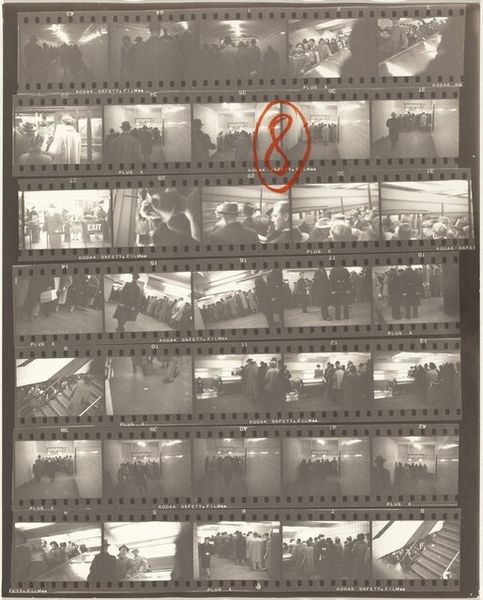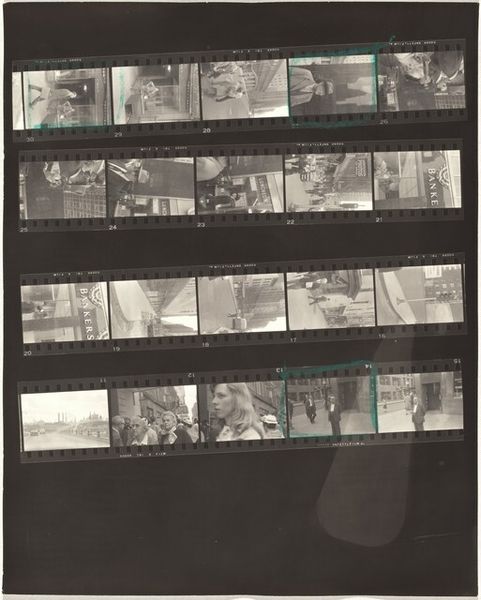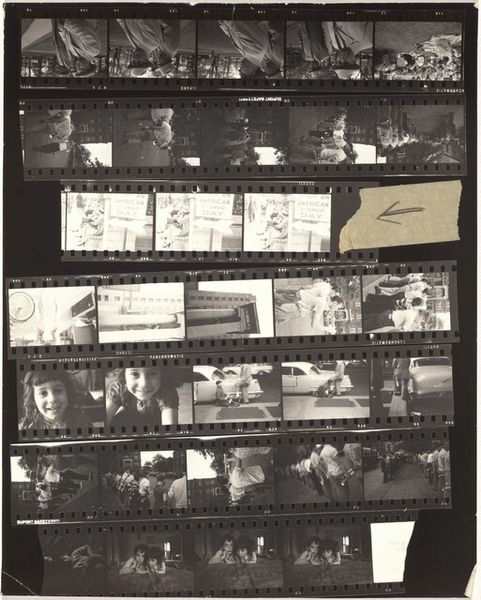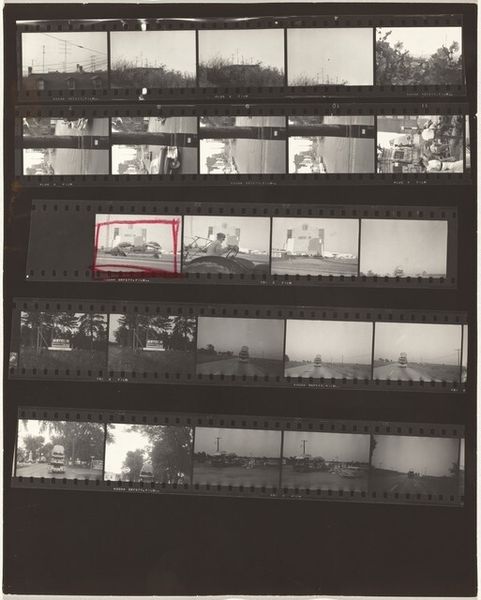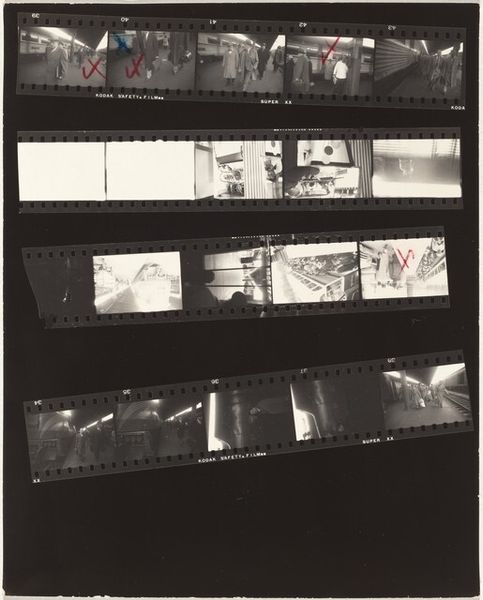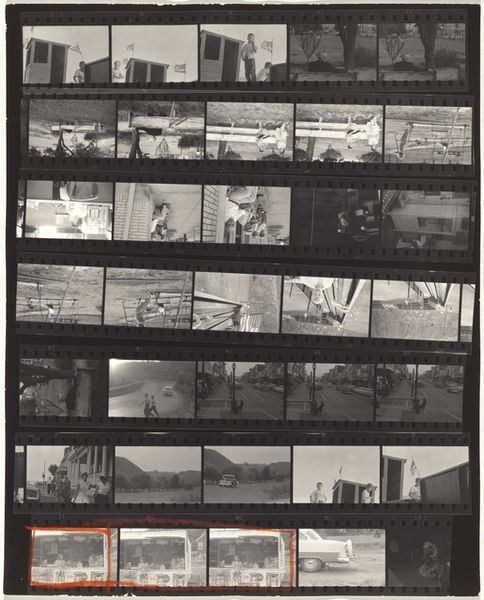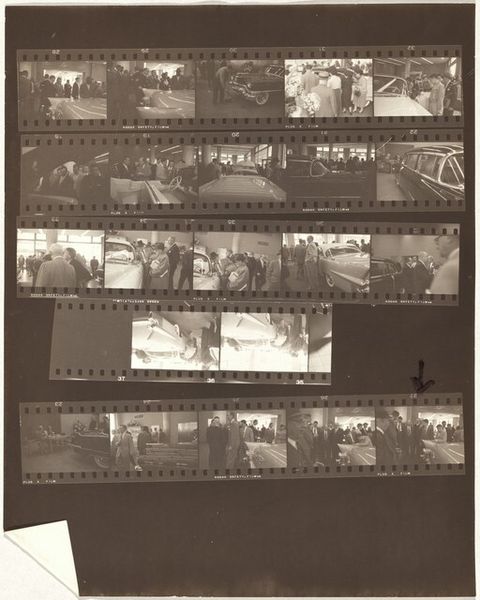
Dimensions: sheet: 25.2 x 20 cm (9 15/16 x 7 7/8 in.)
Copyright: National Gallery of Art: CC0 1.0
Editor: Here we have Robert Frank's gelatin silver print, "Embarkation--New York City V," created in 1955. The format, a contact sheet, gives the piece a rather raw, almost documentary feel, as if we’re peering into the photographer's process. I am intrigued by the overall mood: A combination of detachment, a little chaos, a celebration perhaps tinged with an unknown melancholy? How do you see this collection of images interacting? Curator: That's a very perceptive reading, considering the context surrounding Frank's work. These images weren't originally presented as a cohesive artwork in this form; they are outtakes, really. But the very act of presenting this contact sheet, the artist's process laid bare, speaks volumes about the post-war social and cultural landscape. How do you think the display of raw process, in and of itself, reshapes what is considered to be art? Editor: Well, by seeing these preliminary and less formally perfect photos, does it try to breakdown art's supposed perfection, almost making it more democratic by allowing a broader range of visuals that society may see and be impacted by? Curator: Precisely. Frank, through his entire project 'The Americans', challenged established norms of photography and social representation. Displaying a contact sheet pushes this boundary. It invites viewers to engage critically not just with the images themselves, but with the very machinery of image-making and its relationship to truth and social narratives. What kind of power is on display, through these selected images? Who has control over it? Editor: Hmm, so maybe it points at a shift where everyday experiences become legitimate subjects for artistic exploration? Curator: Exactly! And by doing so, he gives agency back to people previously unacknowledged. These fragmented glimpses capture New York's dynamism but also reveal a certain disaffection, mirroring a society undergoing immense transformations and reassessing its own values. These seemingly random images tell the tale. Editor: It's fascinating to consider how the presentation of something – even the outtakes – can alter its meaning and influence the observer. Curator: Indeed. Robert Frank’s outtakes can have as powerful effect, as an anthropologist displaying what normally goes unseen or unsaid. Thanks, I’ve learned something new. Editor: Agreed, thanks for sharing. This reminds me about questioning perspectives in our contemporary cultural production!
Comments
No comments
Be the first to comment and join the conversation on the ultimate creative platform.

